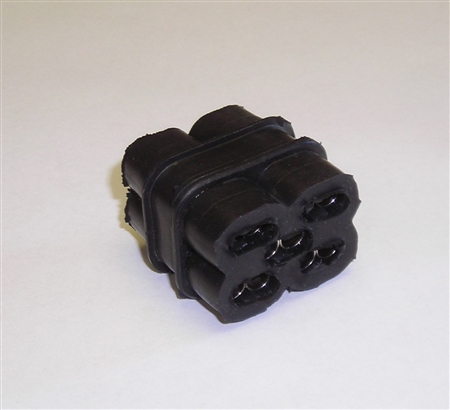- Joined
- Nov 22, 2020
- Messages
- 42
This story began several years ago. My first ever bike was a 1970 BSA Lightning that I purchased in 2004 and had to completely rebuild. It was a huge learning experience-a friend of mine painted the tank and side panels, and I had a machine shop bore the cylinders and ground the crank. The rest I did myself.

The night I brought it home in 2004.

Almost complete-a couple of years later.
Fast forward a few years when I purchased a 1968 Triumph Bonneville from my buddy, Dennis B, in 2016. He was getting rid of it as he had a number of other bikes, including a 1950s vintage Royal Enfield and two Norton Commandos. When we rode together, he would always ride one of the Nortons.

Dennis finding a loose coil wire after the engine kept missing.
Now with the 1968 Bonnie, I thought it would be fun to have a 1972 Commando. I made a deal with Dennis that if he ever sold either of his Commandos that I would have first right of refusal. After a while of waiting I managed to find a 1972 Commando down in Charleston. The company I worked for at the time was located in Charleston and I had to drive down there the following week. I spoke with the owner who said he was going to be around so I scheduled a meeting for that Monday.
On my way south, I phoned a friend to tell him what I was doing and mentioned how I was looking forward to working with Dennis on the rebuild. He informed me Dennis has just passed due to a massive stroke. It was a sad beginning to this project, but in the end, I picked it up. The nice thing was that the mileage and per diem from that trip paid for the bike, so essentially my Norton was free to me.

Finally at home-2018.

The story the owner gave me was that the bike has been under a guy's house in Charleston. After he passed, his family was going to throw it away. While at the dump, the owner's friend asked what they were doing and they ended up giving it said friend who then gave it to the owner. His intention was to restore it, but life and retirement got in the way, so he sold it to me.
The first thing to do was get it registered. Fortunately, I didn't anticipate the owner having a title, so I brought a Vermont Bill of Sale form. Several hundred dollars, a trip to the state police barracks to verify serial numbers and that it wasn't stolen, and a few weeks later I had it registered! The last registration was in 1981.

There was also a SC registration on the forks that expired in August 1981.
So now that the bike is legally mine, and other projects are out of the way (or nearly so), it's time to begin digging into this beast for a ground up restoration to make a nice looking, useable rider. Fortunately I'm up to date on my tetanus shot!
The night I brought it home in 2004.
Almost complete-a couple of years later.
Fast forward a few years when I purchased a 1968 Triumph Bonneville from my buddy, Dennis B, in 2016. He was getting rid of it as he had a number of other bikes, including a 1950s vintage Royal Enfield and two Norton Commandos. When we rode together, he would always ride one of the Nortons.
Dennis finding a loose coil wire after the engine kept missing.
Now with the 1968 Bonnie, I thought it would be fun to have a 1972 Commando. I made a deal with Dennis that if he ever sold either of his Commandos that I would have first right of refusal. After a while of waiting I managed to find a 1972 Commando down in Charleston. The company I worked for at the time was located in Charleston and I had to drive down there the following week. I spoke with the owner who said he was going to be around so I scheduled a meeting for that Monday.
On my way south, I phoned a friend to tell him what I was doing and mentioned how I was looking forward to working with Dennis on the rebuild. He informed me Dennis has just passed due to a massive stroke. It was a sad beginning to this project, but in the end, I picked it up. The nice thing was that the mileage and per diem from that trip paid for the bike, so essentially my Norton was free to me.
Finally at home-2018.
The story the owner gave me was that the bike has been under a guy's house in Charleston. After he passed, his family was going to throw it away. While at the dump, the owner's friend asked what they were doing and they ended up giving it said friend who then gave it to the owner. His intention was to restore it, but life and retirement got in the way, so he sold it to me.
The first thing to do was get it registered. Fortunately, I didn't anticipate the owner having a title, so I brought a Vermont Bill of Sale form. Several hundred dollars, a trip to the state police barracks to verify serial numbers and that it wasn't stolen, and a few weeks later I had it registered! The last registration was in 1981.
There was also a SC registration on the forks that expired in August 1981.
So now that the bike is legally mine, and other projects are out of the way (or nearly so), it's time to begin digging into this beast for a ground up restoration to make a nice looking, useable rider. Fortunately I'm up to date on my tetanus shot!
Last edited:

